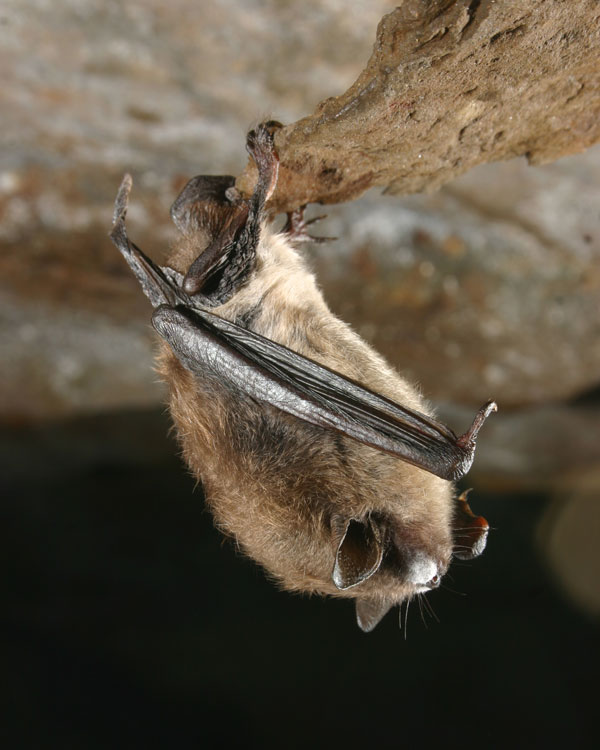Fungus Alone Is Killing Off Bats, Study Proves

The disease decimating bat populations in the northeastern United States is caused solely by a fungus, without the help of other agents or pre-existing health conditions, experiments have confirmed.
"White nose syndrome," first reported in 2006 in New York state, has spread to Indiana, Kentucky and Tennessee, and scientists still are not sure how it kills. Some have worried that it could lead to the extinction of North America's most common bat, the brown bat Myotis lucifugus.
For some time scientists have associated the soil-dwelling fungus Geomyces destructans with white-nose syndrome, named for the powdery growth found on the skin of hibernating bats. Now, for the first time, scientists have infected healthy bats with the fungus — both from cultured samples and directly from bats that had acquired the disease in the wild. [Read: Bat Death Mystery Solved]
All of the bats intentionally treated with the fungus contracted the disease, as did 89 percent of the healthy bats that were housed with infected bats.
The experiments confirmed that no other causative agents or pre-existing health conditions contribute to the disease, according to study researcher David Blehert, a microbiologist with the U.S. Geological Survey's National Wildlife Health Center.
While one part of the investigation was resolved, science is far from safeguarding bats from the disease, which causes lesions on their skin.
"We still don't know what to do tomorrow to make the disease stop," Blehert said. "Few, if any, wildlife diseases have been stopped in their tracks and eradicated."
Sign up for the Live Science daily newsletter now
Get the world’s most fascinating discoveries delivered straight to your inbox.
White-nose syndrome was first documented by a caver in a part of Howe Caverns, a tourist attraction near Albany, N.Y. Since then the disease and its devastation has spread. A study published in summer 2011 issue of Bat Research News calculated an overall decline of 88 percent in six species at 42 sites in five eastern states.
The fungus has also been found among European bats, where it lives on their skin but does not appear to kill off the bats. Blehert speculated that the fungus had co-evolved with European bats, which developed the means to deal with it. If this is the case, it's possible the fungus was introduced by accident to the New York cave — perhaps by soil stuck to a caver's shoe.
White-nose syndrome has now been documented in Kentucky, Tennessee and Indiana; however, high mortality among the bats there has yet to begin. It's possible that it takes time for the disease to become established, and it is also possible that environmental conditions may influence its outcome, Blehert said.
"One of the things we would like to start looking at is how caves and mines in which bats hibernate in the Midwest might differ from the Northeast," he said.
The study appears in the Oct. 27 issue of the journal Nature.
You can follow LiveScience writer Wynne Parry on Twitter @Wynne_Parry. Follow LiveScience for the latest in science news and discoveries on Twitter @livescience and on Facebook.











